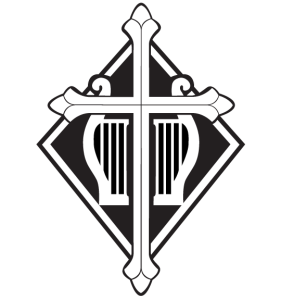Sing a NEW Song: Divine Service: Rite Three
Martin Luther was reluctant to create a new form of worship for the congregations of the evangelical confession. He respected and loved what was good about the music and text of the old liturgy of the church, yet the old services contained elements that seemed to be against the spirit of the gospel. He prepared two forms of the Divine Service that contained much that was old and familiar. With the assistance of Johann Walter the Lutheran congregations of the 16th century sang contemporary music based upon the example of the composers of previous generations. Luther was wise to include Walter, the composer and theoretician, in his work of evangelical liturgical reform. Luther’s love of music and theology combined with the theoretical and compositional expertise of Johann Walter to impress at least two centuries of pastors and musicians with the importance of of liturgical forms that were both traditional and contemporary. Contemporary language and music have been combined with old and familiar forms and melodies with great success in the Lutheran tradition. (J.S. Bach, Paul Manz, and hundreds of others)
Our Evangelical Lutheran Hymnary (ELH) contains much that is old and familiar. Even as it incorporates that which is traditional a new hymnal has a responsibility to bear witness to the gospel proclamation in the language of the present generation.
From the beginning of the project the ELS Worship Committee determined to chart a conservative course. It was our desire to present a book that would be useful to congregations acquainted with the traditions of The Lutheran Hymnary (Rite One) and The Lutheran Hymnal (Rite Two). In the earliest stages of the work we determined to present the services in the English forms as they appeared in the books of 1913 and 1941. Congregations and pastors who made the initial request for a new book encouraged us to reconsider our conservative strategy and “update” the language of the old liturgies. We did this reluctantly and carefully, and used the New King James Version as our guide. Even more radical textual updating was suggested by the doctrine committee of the synod, and some of their suggestions were incorporated in the final drafts of the ELH (especially the text of the creeds). Along with the updated language in the old services we hoped to include a new setting of the historic liturgy of the church that would reflect the linguistic and musical developments of recent decades.
In Divine Service: Rite Three ELH presents an old text in new music. At first we tried to compile a “new” service using music from various composers. The results did not seem satisfactory and we determined to invite a single composer to write music for the new service. We imposed the strictest of limitations: the vocal range was limited to reflect the “highs and lows” of the modern singing congregation, and we hoped for a keyboard part that would be challenging but approachable.
Alfred Fremder was invited to compose the music for the service. Fremder had been the choir director at Bethany in the 40’s and 50’s, and he was acquainted with the musical tradition of the ELS as it was represented in the Lutheran Hymnary of 1913. His experiences in music conducting, teaching, composing and editing along with his Bethany connection seemed to make him a logical choice for the task at hand.
Imagine our joy when we received the completed score! It was a happy duty to be the first to play through the new service with its challenging Gloria in excelsis Deo and melodious Kyrie, Sanctus, and Agnus Dei! From the beginning we were sure that this would be a happy addition to the worship repertoire of those congregations longing for something that was musically fresh but theologically traditional. We owe Dr. Fremder a debt of gratitude for his gift to the ELH, and we thank his wife “Ernie” for her careful and capable copying of the score.
While not every congregation in our synod will want or be able to use Rite Three as one of the forms of the Divine Service, the musical parts of the service are certainly appropriate as choral anthems and vocal solos throughout the year. Happy the congregation that is “at home” with the various liturgical forms in ELH where the worship of today is built upon the foundations of yesterday and looks forward in eager anticipation to the moment when tomorrow will be transformed into eternity!